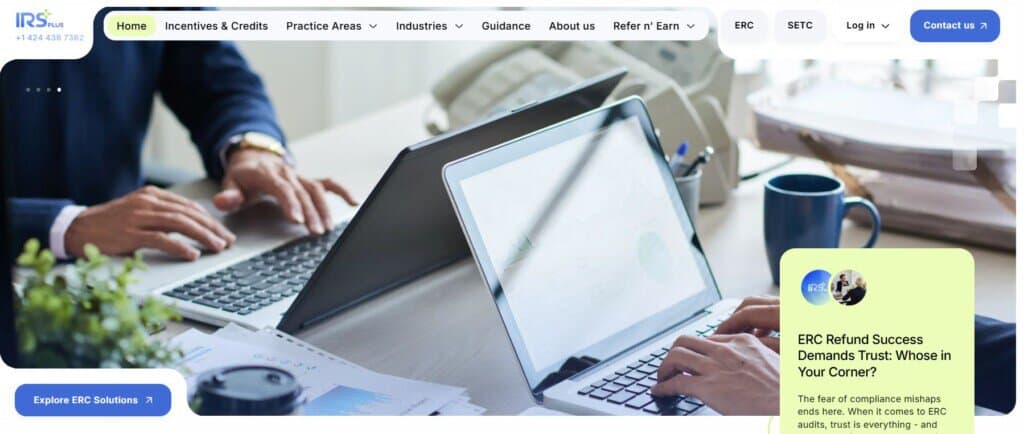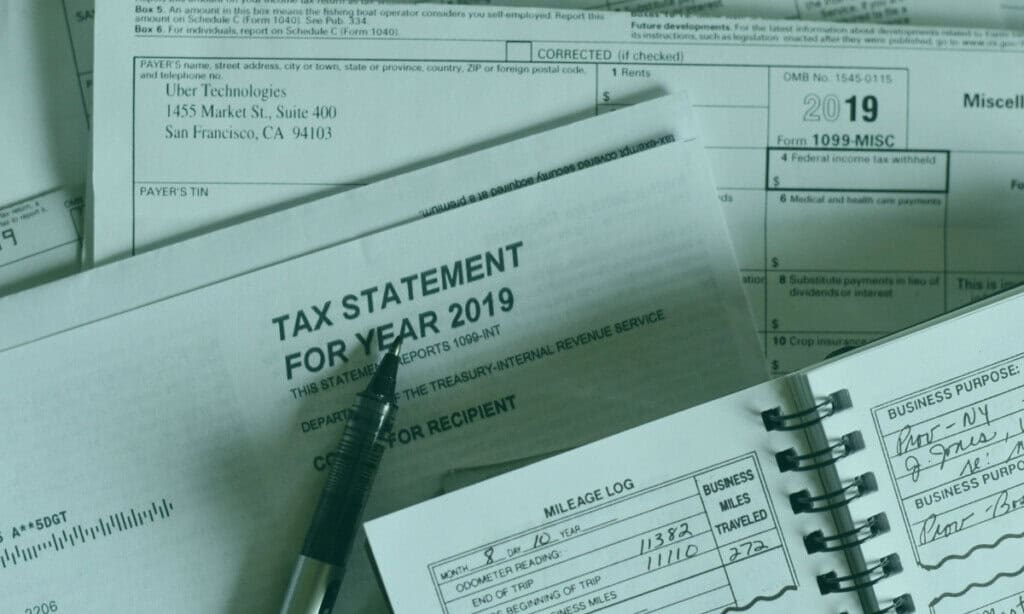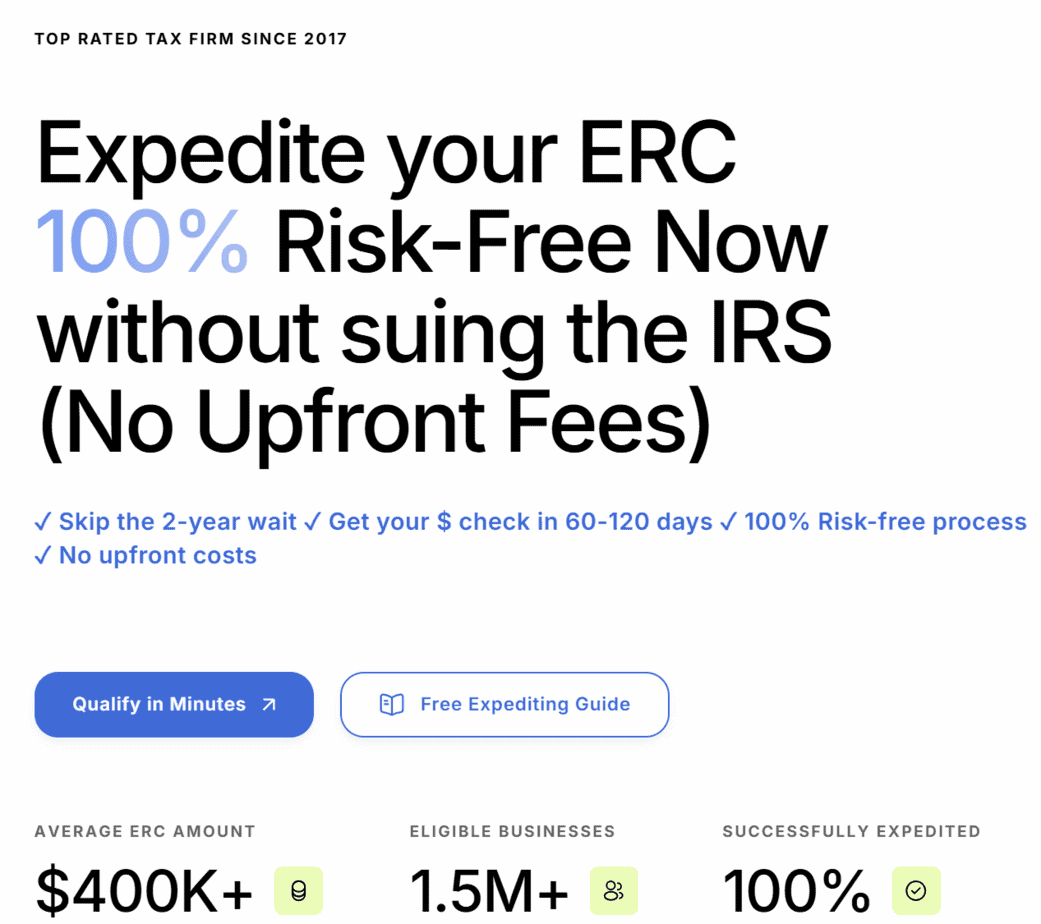- Employee Retention Credit (ERC)
- Research and Development (R&D) Tax Credit
- Work Opportunity Tax Credit (WOTC)
- Small Business Health Care Tax Credit
- Disabled Access Credit
- Paid Family and Medical Leave Credit
- New Markets Tax Credit (NMTC)
- Alternative Fuel Vehicle Refueling Property Credit
- Should Your Business Seek Tax Credit Relief?
Last Updated on April 22, 2025 by Ewen Finser
It’s a cruel world out there these days when it comes to costs, and one of the biggest liabilities most companies face is the dreaded tax bill.
Tax credits are a great way to prevent the IRS from taking too much of your money. However, this area can be a bit of a minefield; eligibility requirements are tough to wrap your head around, and you can quickly get into hot water if you make mistakes in your filing. To avoid audits, it might be worth consulting with a tax preparation specialist if you want to file for one of these credits.
The current White House administration has been clear about its intention to slash costs, so the tax credit landscape may look very different going forward. For now, though, businesses should be able to benefit from all the credits we’re looking at here.
Let’s take a look at some of the most useful tax credits for small businesses along with the criteria you need to satisfy in order to qualify for them.
Employee Retention Credit (ERC)
The Employee Retention Credit (ERC) is among the pandemic-era tax relief incentives the federal government introduced with the CARES Act in 2020. It’s essentially a “thank you” to businesses who kept their people in jobs in 2020 and 2021 in spite of government restrictions.
However, I must attach a warning label here. The IRS has reportedly been dealing with a huge amount of ERC fraud, so its agents are on high alert for improper claims. In other words, if you overstate your entitlements, there’s a very good chance you’ll get slapped with an audit and a penalty.
Tread carefully.
How It Works: Eligible businesses can claim up to $26,000 per employee. The credit is based on wages and other benefits paid during periods of revenue loss or operational difficulty in 2020 and the first three quarters of 2021. The IRS has implemented quite broad eligibility requirements, so it’s worth checking out whether you might qualify; after all, more or less every business in America was impacted by the COVID-19 pandemic to some degree.
Claiming Process: Businesses must file amended payroll tax returns (Form 941-X) and demonstrate eligibility based on revenue loss or shutdown criteria. I’ve previously recommended IRSPlus for assistance with this in other blog posts, and I’ll happily do so again here. I think it’s worth it to consult a specialist, especially with the risk of an audit.
Most ERC applications are stalled with traditional CPAs and accounting firms. The only firm I've found that is able to expedite and get ERC funds approved in this environment is IRSplus.

Research and Development (R&D) Tax Credit
The R&D credit is, in my experience, among the most underused sources of relief in our tax system. Many businesses are under the impression they need to engage in intense product development or far-reaching market research to qualify; in reality, the bar is much lower.
The R&D tax credit rewards a huge range of innovations in a large number of industries. My favorite discovery I made while researching for this article was that R&D tax relief is available for cannabis companies, even though the federal government still regards their product as a Scheduled I controlled substance. Uncle Sam works in mysterious ways.
How It Works: Companies can claim a percentage of qualified R&D expenses, including employee wages and contract payments, materials, and cloud computing costs. A percentage of these costs can be offset against federal income tax. Certain companies also qualify for an R&D tax credit in relation to their payroll taxes.
Claiming Process: Businesses need to document qualifying activities, file Form 6765, and support claims with detailed records. You may be able to access additional R&D tax relief at the state level, depending on where you live.
Work Opportunity Tax Credit (WOTC)
This is available to employers who hire people from “certain targeted groups who have faced significant barriers to employment.” These targeted groups include:
- Veterans.
- Ex-felons.
- Recipients of certain types of Social Security benefits.
- People with physical or mental disabilities.
- People who have been unemployed for an extended period.
The employees in question must be hired before January 1, 2026 in order for the credit to be successfully applied. There was previously a plan in place to sunset the WOTC at the end of 2020, but the Taxpayer Certainty and Disaster Tax Relief Act of 2020 extended its lifespan by another five years. So, it will be around until the end of this year at least.
How It Works: Employers can receive up to $9,600 per eligible hire, with the exact amount depending on the employee’s background and hours worked. Employers of all sizes can claim the credit, but it is not possible to claim the WOTC in relation to wages that are also used to claim other wage-based credits.
Claiming Process: Employers must get certification from their state workforce agency and file Form 5884 with their tax return. Prior to this, both the company and the employee concerned must submit Form 8850 within four weeks of the employee’s start date.
Small Business Health Care Tax Credit
Healthcare is among the biggest financial challenges facing the average American. While it doesn’t quite go as far as the publicly-funded systems available in many other nations (a man can dream), the Small Business Health Care Tax Credit goes some way toward making it more accessible by incentivizing smaller companies to provide insurance plans for their workers.
This credit helps small businesses offering health insurance to employees, making it easier to provide competitive benefits.
How It Works: Small businesses with fewer than 25 full-time equivalent employees can claim up to 50% of their health insurance premiums.
Claiming Process: Businesses must offer coverage through the SHOP marketplace and file IRS Form 8941.

Disabled Access Credit
If you make adjustments to your business premises to make it accessible to people with disabilities, you can claim this credit to offset half the eligible expenses you incur. This might include labor costs, materials, and anything else that goes into the project.
Say you build a wheelchair ramp providing access to your store, and the bill comes to $8,000; you could potentially claim up to $4,000 through this credit.
How It Works: Small businesses (those that earn $1 million or less annually, or have no more than 30 full-time employees) can claim up to $5,000 per year against eligible expenses.
Claiming Process: Businesses must document the relevant improvements and file IRS Form 8826 to detail what they cost.
Paid Family and Medical Leave Credit
Paid leave is another thing that often leaves Americans green with envy when they look at their counterparts in other countries (I’m looking at you, Europe). Who wouldn’t love 30 days off a year?
While paid time off is comparatively scarce in the US, this credit can help employers who allow their employees to take time away from work for medical or family reasons. If you have a policy stating that your full-time workers are entitled to at least two weeks of paid family or medical leave annually, and that the pay is at least half their ordinary working wage, you may qualify for this credit.
Events that may create an entitlement to this credit include:
- The birth of a child.
- The adoption or fostering of a child.
- Care for a sick, injured, or disabled spouse, parent, or child.
- A major sickness, injury, or disability on the part of the employee themselves.
- Issues related to a spouse, parent, or child of the employee being called to serve in the armed forces.
How It Works: You can claim a credit ranging from 12.5% to 25% of wages paid. The credit can only be claimed in relation to “qualifying employees,” which are workers who have been with your company for less than a year and earn less than a specified amount (this amount changes depending on the tax year you’re claiming for, so it’s worth checking in with a tax specialist to find out what it will be in your case).
Claiming Process: Employers must file IRS Form 8994 and document compliance with requirements.
New Markets Tax Credit (NMTC)
The NMTC Program is designed to encourage investment in economically distressed communities. This scheme has been around since 2000. A wide range of project types can qualify for this credit; the key requirement is that the project must create a positive community impact.
Whether you’re an investor or a business owner operating in a disadvantaged area, this one is well worth checking out.
How It Works: As an investor, you can claim a credit worth 39% of your initial outlay over seven years.
Claiming Process: You must apply through the Community Development Entity (CDE) serving the relevant area and meet eligibility criteria.
Alternative Fuel Vehicle Refueling Property Credit
Electric vehicles have long been hailed as the future of travel, but their critics rightly point out that a lack of charging infrastructure is holding them back. Buying a Tesla is all well and good for people who never use them to go further than the grocery store, but it’s a different ball game for those who regularly travel hundreds of miles along routes with few charging stations.
For this reason, the federal government has thrown its weight behind initiatives that make life easier for EV users, such as the Alternative Fuel Vehicle Refueling Property Credit.
How It Works: The credit covers 30% of all costs associated with the installation of charging equipment, up to $100,000 per location. Eligible equipment includes charging ports, fuel dispensers, and storage properties.
Claiming Process: Businesses must file IRS Form 8911 and provide installation details. Notably, this credit isn’t restricted to businesses; you can also claim it if you install refueling property in your place of residence.
Should Your Business Seek Tax Credit Relief?
Tax credits offer substantial savings, but they can also pose audit risks (and cause severe stress headaches). If you’re not fluent in the cryptic language of the IRS, it might be worth consulting with a specialist tax consultant to discuss your potential entitlements.
Most ERC applications are stalled with traditional CPAs and accounting firms. The only firm I've found that is able to expedite and get ERC funds approved in this environment is IRSplus.


